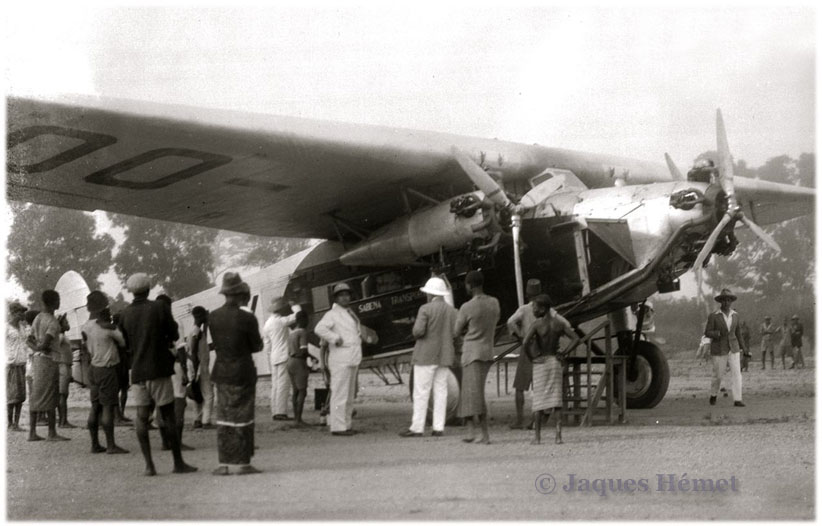
Fokker F.VIIa-3m H-NAEA in the hands (literally!) of the French army. At Aleppo,Syria in the 1930s.
Herman Dekker's website has the following information on H-NAEA:
Registered 27Sep1927 to NV Nederlandsche Vliegtuigenfabriek in Amsterdam, named 'Postduif' (carrier pigeon)
Registration cancelled 28Feb1929
Destroyed 13May1940 at Haamstede.
The registration was valid for the flight to the Dutch East Indies and return.
/. End quote (translation by Webmaster)
H-NAEA made a return flight to the Netherlands East Indies prior, to being delivered to the L.V.A.. Its pilot was Lieutenant G. Koppen.
In January 1926, Koppen had visited Fokker to discuss his plan for a fast mail flight to the Netherlands East Indies. One year later Fokker had made a F.VIIa-3m available at no cost, and funding was provided by the Comité Vliegtocht Nederland-Indië.
KLM's boss, Albert Plesman also sympathized with Koppen's idea as he felt it was about time for a regular service to the Netherlands East Indies. It was already 3 years since the pioneering first flight of H-NACC. Koppen departed from Schiphol on 01Oct1927 with KLM pilot G. Frijns as copilot and S. Elleman of Fokker as flight engineer.
Ten days later the 'Postduif' arrived in Batavia. The return trip to Schiphol took 12 days.
The flight provided a wealth of information about the route and the available ground facilities, and Elleman had an excellent opportunity to check the behaviour of the aircraft and its engines under widely different climatic conditions. [Source: www.dutch-aviation.nl]

This could be the same aircraft, as it also has 'Postvliegtuig' and 'Nederland - Indie' markings on it.
Jacques sent this with the remark 'Fokker at Alep'












 Fokker F.VII H-NADP seen in Syria during the
Fokker F.VII H-NADP seen in Syria during the 























